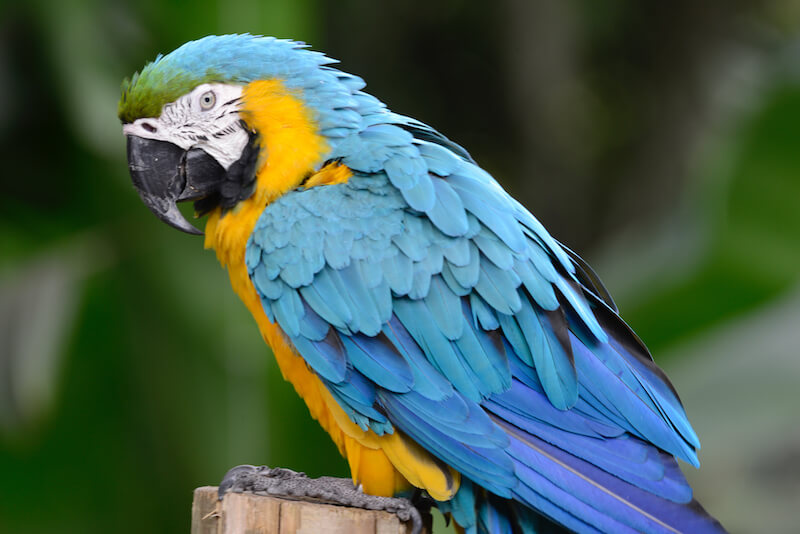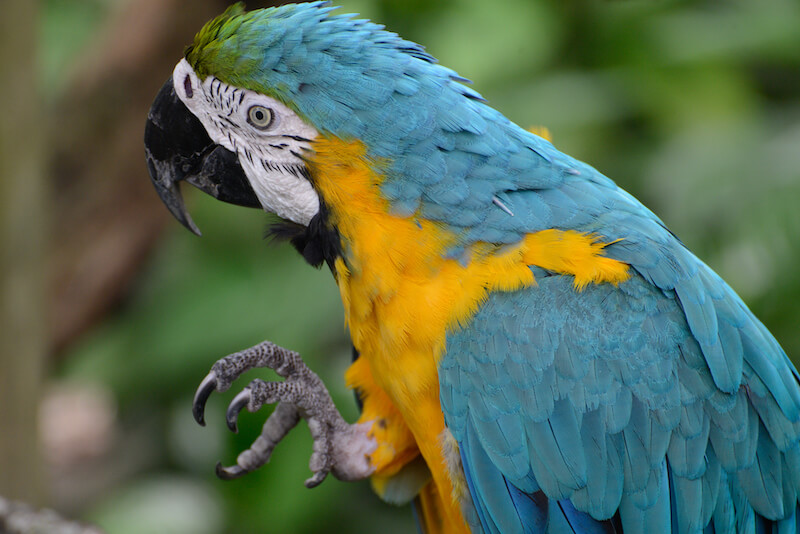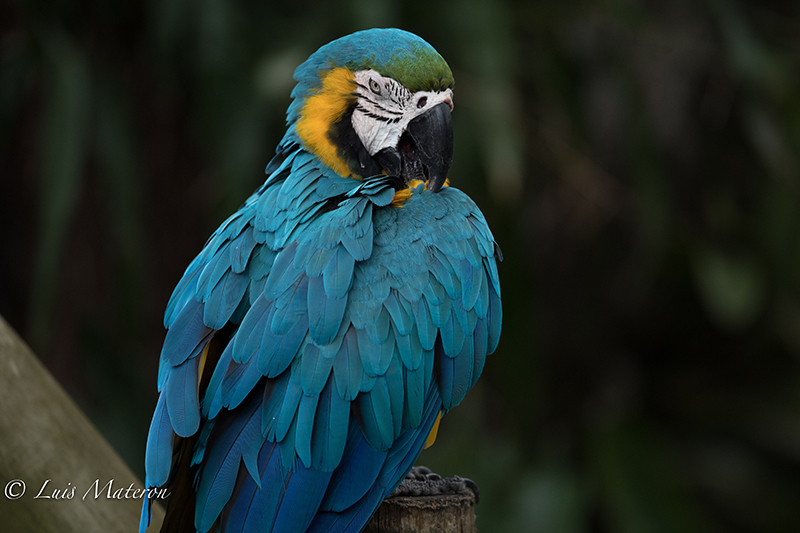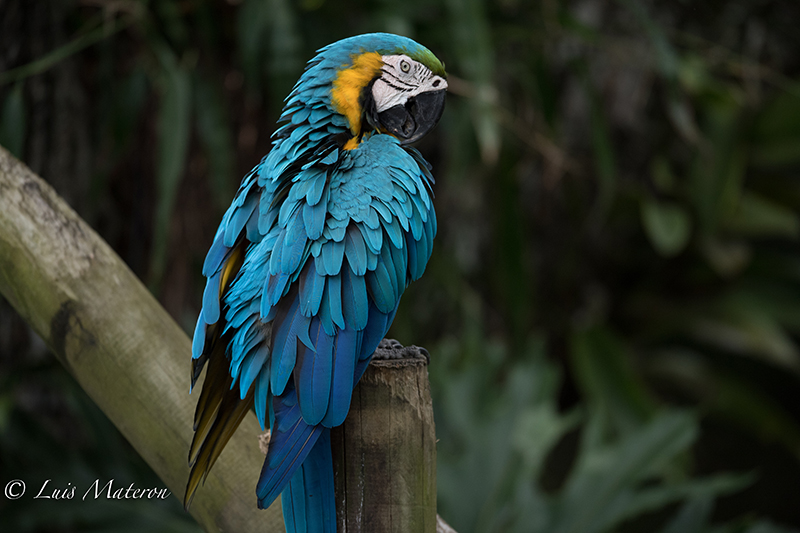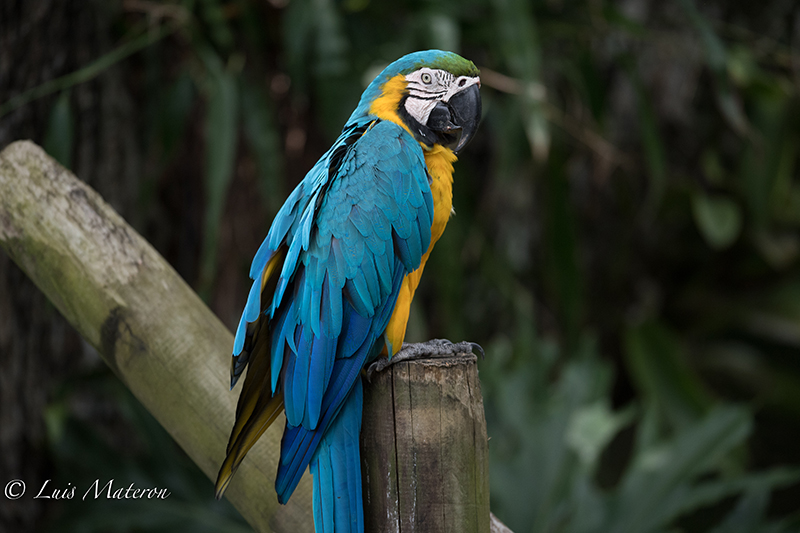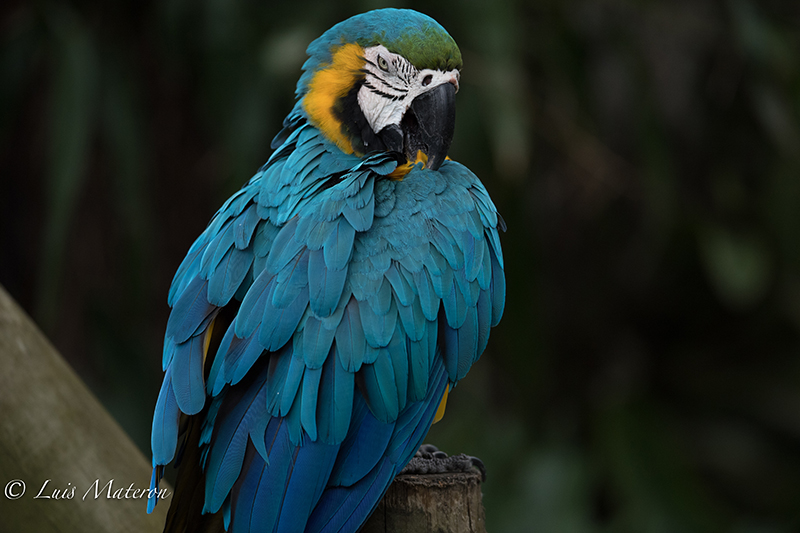Ara ararauna
These boldly colored birds can reach a length of 76–86 cm (30–34 in) and can weigh 1.0-1.5 Kg (2–3 lb) making them some of the larger members of the Psitticidae family. They prefer to inhabit in seasonally flooded forests and gallery forest. Their forecrown is dull green with bright blue upperparts. Bare white facial disc with fine lines of green feathers and with bright golden yellow on the underparts, underwing-coverts, and underside of the tail. They display light blue feathers on the top of their wings, and torso, and darker on their long blue and yellow tail. The throat area is black. The frontmost half of the top of their crown and forehead is covered with green feathers. Some light orange feathers are visible in the inferior parts. The iris is light yellow. Its face has no feathers beside a few black ones separated from each other to form a striped pattern around the eyes. Juveniles are similar to adults but with a brownish iris. Loud raucous calls, some harsh. Produces loud guttural sounds. The macaws feed on fruits and nuts. They are monogamous. Nests are constructed in dead palms of the genus Mauritia. The clutch consists of 2 to 3 eggs that are incubated by the female for about 28 days. Fledging occurs around 3 months after hatching. They live about 35 years in the wild and 60 in captivity.
Estas hermosas aves de intense color miden entre 76 y 86 cm de largo y pesa de 1.0 a 1.5 Kg. Se consideran entre las más grande entre las aves de la familia Psitticidae. Habitan principalmente en bosques inundados cerca a ríos y selvas húmedas tropicales. Con un plumaje azul en su parte superior y amarillo dorado en su pecho y partes inferiores. Su frente es verde y de barbilla azul oscuro. Iris amarillo claro. Su área facial sin plumas grandes y es blanco. La cara presenta plumas negras muy pequeñas que forman líneas cerca de los ojos. No hay diferencia entre el macho, hembra y juveniles, pero los juveniles tienen iris café. Algunas aves presentan un color más anaranjado en el pecho que puede ser debido a factores ambientales. Son monómagas. Hacen agujeros en troncos de árboles y palmas como la del género Mauritia. El macho puede expulsar otras aves de sus nidos o matar sus polluelos si no encuentra sitio para construir su nido. La postura es de 2 a 3 huevos que la hembra incuba durante 28 dias. Las crías nacen ciegas y sin plumas, y, son alimentadas con frutas y semillas, por ambos padres via regurgitación. Los polluelos abandonan el nido a los 3 meses después de eclosión. Viven hasta los 35 años en libertad y hasta los 60 años en cautiverio. Fue mascota de Colón en su viaje de regreso a España.
_LAM3482
_LAM3488
_LAM6782
LAM_3886
LAM_3893
LAM_3885
LAM_3890
LAM_3894
LAM_3888
LM1_5141
LM1_5148
_LAM6779
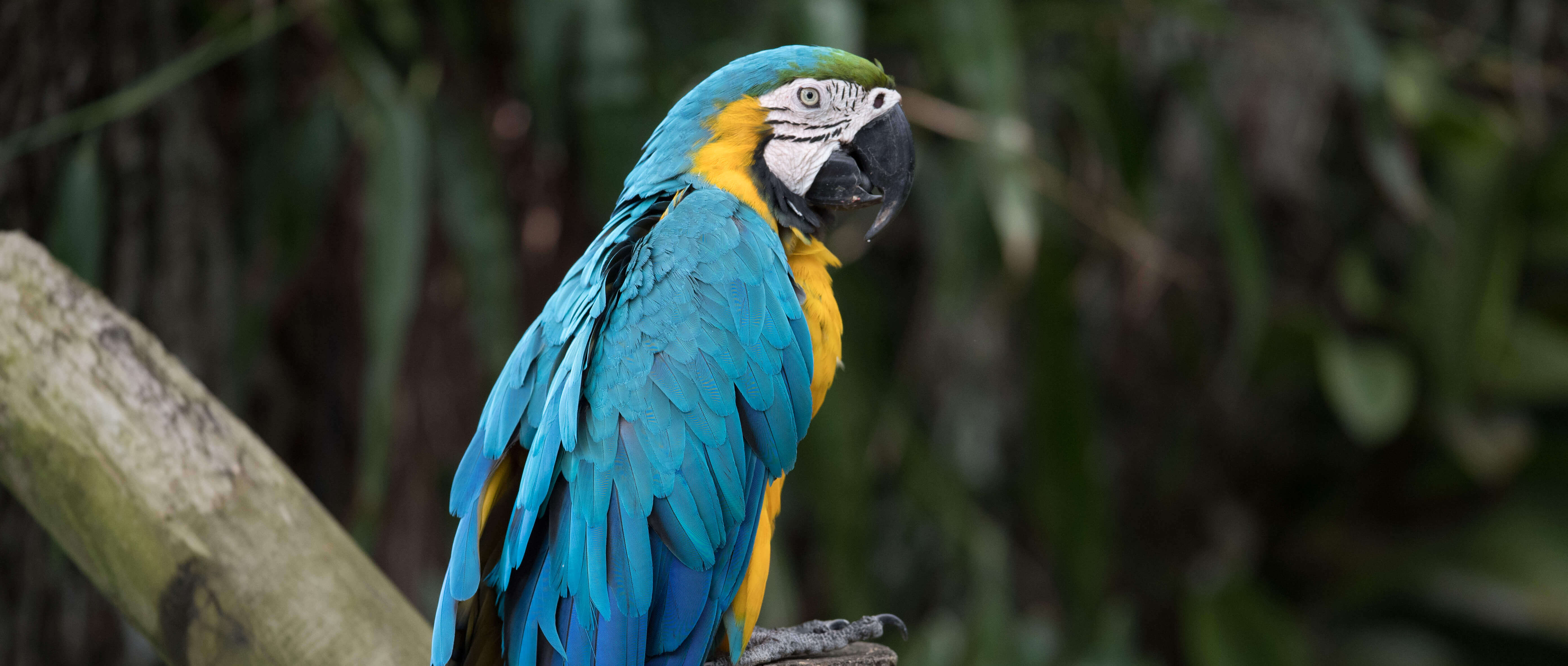
Blue and Yellow MACAW
Guacamaya azul y amarilla

